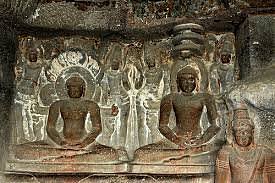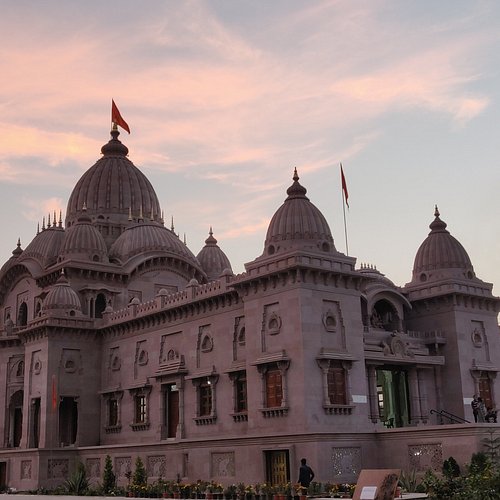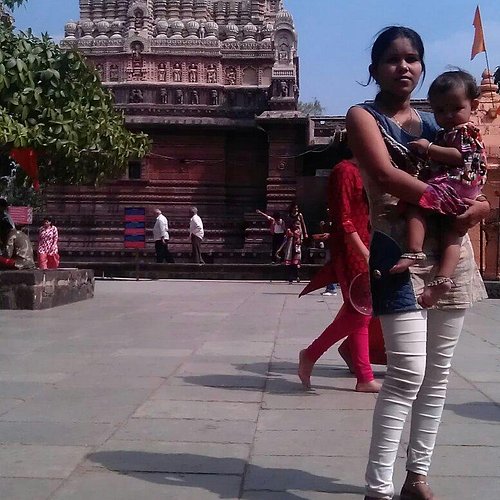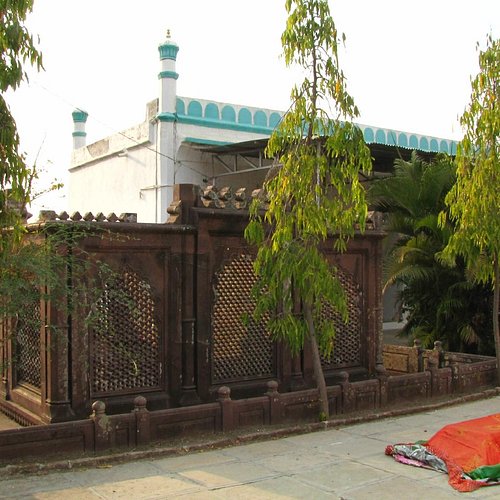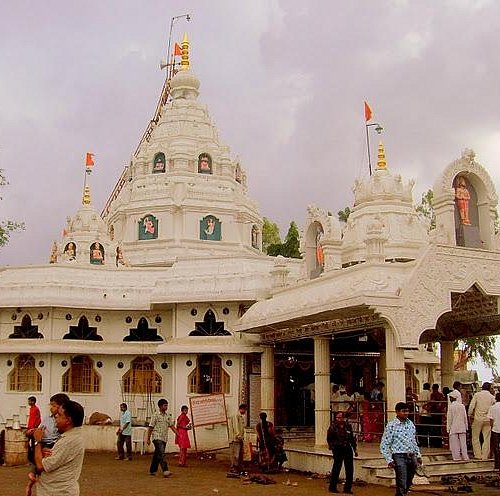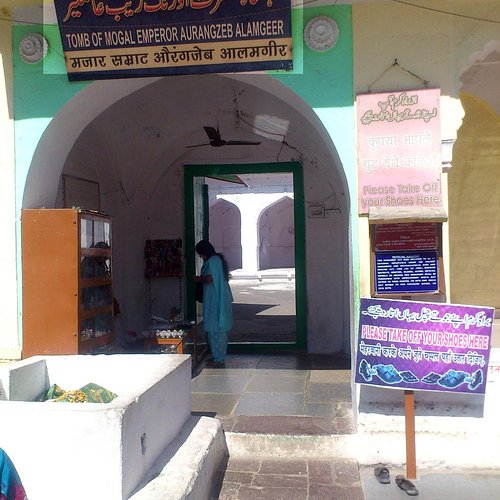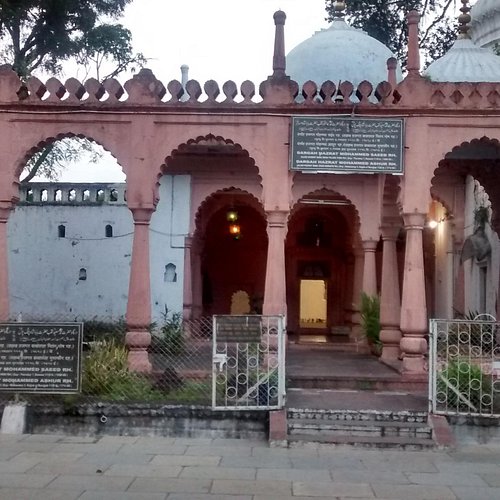10 Sacred & Religious Sites in Aurangabad That You Shouldn't Miss
Discover the best top things to do in Aurangabad, India including Jain Temple in Ellora caves, Grishneshwar Jyotirlinga Temple, Ramakrishna Mission Aurangabad, Ganesh Temple, Valley of the Sufi Saints, Bhadra Maruti, Alamgir Dargah, Dargah Baba Shah Muzafir, Gurudwara Bhai Saheb Bhai Daya Singh Ji Bhai Dharam Singh Ji, Hindu Temples at Ellora Caves.
Restaurants in Aurangabad
1. Jain Temple in Ellora caves
Overall Ratings
4.5 based on 58 reviews
Reviewed By Donna_in_India - New York City, United States
There are five Jain Caves (temples) at Ellora. They are separated from the Hindu and Buddhist Caves - about 1 km. away. If you have a car available, that is the best way to reach the Jain Caves. Jainism was founded in the 6th century BC and is based on a doctrine of non-violence to all living beings. Jains are strict vegetarians. They believe in 24 tirthankaras - enlightened beings - or crossing-makers who guide others across the river of transmigration (the journey of the soul from one life to the next). The first tirthankara was Adinath and the last was Mahavira, who is regarded as the religion's founder. The caves are dedicated to Mahavira and tirthankaras. The Caves are numbers 30-34. Only the 2 most important Jain Caves, 32 and 33 are open for visiting. It is said that the Jain Caves are not as nice/elaborate as the Hindu/Buddhist Caves, but I really found them to be so nice. I loved the stone carvings. We had a very good guide and I was really fascinated to learn about the teachings of Jainism. The excavation of the Jain Caves began in the 9th century after the excavation of the Buddhist and Hindu Caves and lasted until the 11th or 12th century. The caves still attract pilgrims today. Cave 32, the largest of the Jain Caves is known as the Indra Sabha or Assembly Hall of Indra and is considered the finest of the Jain Caves. The entrance leads into a small court at the center of which is a monolithic shrine on a high pedestal. I particularly liked the monolithic elephant near the entrance. The downstairs is pretty plain but the upstairs is ornate and richly decorated. There are images of tirthankaras, Parasnath and Gomateshvara. Inside the shrine is a staute of Mahvira. I also liked the huge lotus carved into the ceiling. Cave 33 is known as the Jagannath Sabha. It is similar to Cave 32 and the sculptures here are very well preserved. This cave - like Cave 32 - is double-storied and has five separate shrines. There were also some nice paintings on the walls.
2. Grishneshwar Jyotirlinga Temple
Overall Ratings
4.5 based on 935 reviews
Reviewed By drprmate - Pune, India
Beautiful stone art , whole temple made up by brownish red rock,The Grishneswar temple is an illustration of south Indian temple architectural style and structure. The temple, built of red rocks, is composed of a five-tier shikara. The temple was re-constructed by Shri Maloji Bhosale of Verul, (grandfather of Chatrapati Shivaji Maharaj) in the 16th century and later again by queen Ahilyabai Holkar in the 18th century. She is credited with rebuilding some of major Hindu temples such as the Kashi Vishvanath temple in Varanasi, a Vishnu temple in Gaya, and a much larger Shiva Jyotirlinga temple in Somnath.This pilgrimage site is located in Ellora (also called Verul), less than a kilometer from Ellora Caves – a UNESCO World Heritage site. It is about 30 kilometres (19 miles) north-west of the city of Aurangabad, and about 300 kilometres (190 miles) east-northeast from Mumbai.
3. Ramakrishna Mission Aurangabad
Overall Ratings
4.5 based on 3 reviews
Ramakrishna Math and Ramakrishna Mission are twin organizations which form a worldwide spiritual movement aims at the harmony of religions, harmony of the East and the West, harmony of the ancient and the modern and peace for all humanity. Ramakrishna Mission is a registered society in which monks of the Ramakrishna Math and lay devotees cooperate in conducting various types of activities.
4. Ganesh Temple
5. Valley of the Sufi Saints
6. Bhadra Maruti
Overall Ratings
4.0 based on 285 reviews
Reviewed By ShvRm_Traveller - Goa, India
The temple is located in Khuldabad, near Aurangabad. Lord Maruti's idol in the temple is in reclining position. We visited the place on Sunday, but the temple was not much crowded. Learnt that, except for Saturday and Tuesday, the temple is not much crowded. The original temple was small, now it is being expanded with new constructions. There are stalls selling souvenir and devotional items as well as restaurants near the temple.
7. Alamgir Dargah
8. Dargah Baba Shah Muzafir
9. Gurudwara Bhai Saheb Bhai Daya Singh Ji Bhai Dharam Singh Ji
Overall Ratings
4.0 based on 8 reviews
10. Hindu Temples at Ellora Caves
Overall Ratings
5.0 based on 4 reviews
Reviewed By Donna_in_India - New York City, United States
There are 17 Hindu Caves at Ellora - numbers 13-29. They were excavated at the beginning of the 7th century. The Hindu caves are the centerpieces of Ellora and are so detailed and intricate that they must have required generations of planning and coordination, not to mention the 100+ years it took to actually create them. Two of the more interesting Caves were Cave 14 also known as Ravana ki Kahi and Cave 15 also known as Dashavatara. Cave 14 contains sculptures of Hindu gods/goddesses (deities) such as Durga and Vishnu. Cave 15 was double-storied (I really liked this one) and had superb sculptures. However the highlight of the Hindu Caves, and of Ellora, in fact, is Cave 16 known as Kailasanath (Kailasa/Kailasha) Temple. This temple is actually a complex - it is huge! - 266 feet by 154 feet. It was carved (top to bottom out of one single rock that is double the size of the Parthenon in Athens). It is the largest monolithic structure in the world and was sculpted with the mere use of hammer and chisel. This temple is dedicated to Lord Shiva and there are countless carvings of him. There is an open courtyard with a towering pillar and numerous sculptured (life size) elephants, which are world famous. The two stairways leading to the Mandapa of the main temple are carved with narrative episodes from the two great Hindu epics, the Ramayana and the Mahabharata. Those were really interesting!! I also liked the Nandi Pavillion - housing a large sculpture of Nandi, the bull which Lord Siva rides. One of my other favorite sculptures was Ganesh - I had to look hard to find him but knew he would be in the complex. Allow plenty of time for the Hindu temples, especially Kailasa. I'm not sure that I would recommend seeing Kailasa last - you may be too tired by then - and there is so much you should not miss!! If you see Kailasa first, by the time you finish the Hindu and Buddhist Caves, you may not make it over to the Jain Caves (especially if you're walking). We saw Kailasa right after seeing Jain Caves 32 & 33, and it worked out really well. (We continued on to the other Hindu Caves and the Buddhist Caves.) If for Kailasa alone, I would highly recommend having a guide. You will find out much more than you would from a guidebook.

